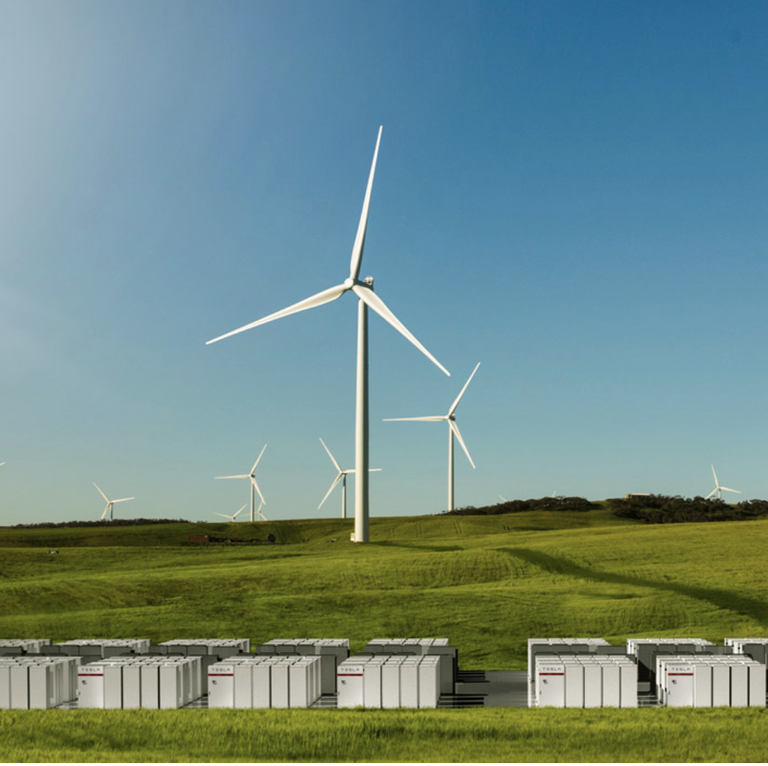
Elon Musk’s high-performing backup “battery” in South Australia has made the news for saving the state tens of millions of dollars. But how can a strictly backup power source that supplies power for just an hour make such a huge difference? And how does the battery facility work within the grid? Let’s take a look.
The overall effect of the Hornsdale Power Reserve is twofold. By storing power during low demand times, Hornsdale reduces “wasted” power and locks in capacity at the lowest-cost time. And by releasing power during highest demand times, the battery reduces the number of edge case blackouts that affect South Australia’s grid each summer when extreme weather meets peak consumption.
Why is the grid so vulnerable? In the grand narrative arc of the South Australia battery farm, the inciting incident was a massive blackout in 2016: “One of the worst storms to hit South Australia in 50 years knocked out 22 high-voltage power pylons,” The Guardian reported. “The lines on those pylons carry electricity generated near Port Augusta to the rest of the state.”
At the time, South Australia’s electric utility said, “Three out of the four transmission lines moving power between Adelaide and the north of South Australia are confirmed to be currently down.” When those lines went down, “a cascade of automatic safety switches appear to have been flipped, in order to protect the rest of the SA power network—and indeed the rest of the National Electricity Market,” The Guardian explained.
The extent of the blackout led officials to shut down what did remain functional so that unpredictable surges and reroutes wouldn’t short the rest of the equipment or start fires.
In the aftermath, a Conservative politician blamed the push for renewable energy for the extent of the blackouts. When the head of batteries at Tesla said he was sure the company could do better, an Australian billionaire asked if he was serious, and Musk jumped in to promise his team was.
Musk reached his goal 40 days early, and the Australian billionaire funded the project as promised. Now, the Neoen-owned power reserve is literally a facility full of Tesla Powerpacks that receive and store energy from nearby wind and solar farms. By storing power up to its capacity of 100 MW, the “battery” can absorb brief blips in the grid surrounding it, reducing outages for residents.
Wind power played no role in the 2016 blackout, although officials alleged in 2019 that local wind farms didn’t have the generator infrastructure to absorb natural ebbs and flows. South Australia requires that infrastructure because it’s what allows the state to use so much renewable energy while keeping its grid stable.
As coal plants get older, the grid loses one of its steady fallbacks. With high summer temperatures, providers sometimes shut down the grid rather than risk fires, and the overall amount of available power is lower in the summer for environmental reasons. It’s a recipe for frequent nuisance blackouts each year from December to February.
It’s in this erratic peak season that the Hornsdale facility is most impactful.
“The Tesla battery can respond to these frequency events much more quickly than coal or gas-fired generators, which have traditionally performed the role in Australia, and at a much lower cost,” wind utility Neoen officials told Bloomberg. “The grid has a heartbeat that needs to be regulated,” Neoen’s Garth Heron said then. “[Batteries] really are able to solve a multitude of problems.”
Tesla’s Powerpack is a ready-to-stack format comprising individual battery pods packaged together in weather-safe units. It’s kind of the commercial counterpart to the Powerwall, which is a home solution that stores solar power from panels and releases it as needed in the evening. The Powerpack website includes a cogent testimonial from a Target retail store: “This technology offers unique benefits to powering our buildings, most importantly relieving stress from the electrical grid at peak times.”
Instead of relying on coal plants or the renewable energy farms themselves—in South Australia, that could be solar, wind, or hydro—to provide stopgap power during peak times, the Hornsdale facility steps in whenever the power might cut out otherwise.
